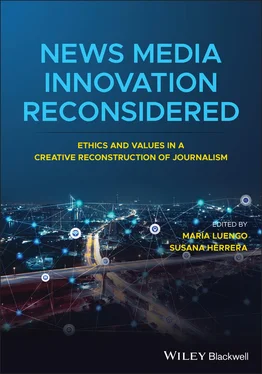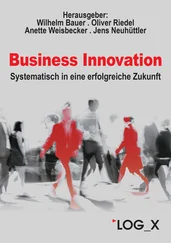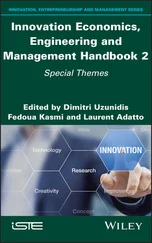6 Begin Reading
7 Conclusion
8 Index
9 End User License Agreement
1 i
2 ii
3 iii
4 iv
5 v
6 vi
7 vii
8 viii
9 ix
10 x
11 xi
12 xii
13 xiii
14 xiv
15 xv
16 xvi
17 1
18 2
19 3
20 4
21 5
22 6
23 7
24 8
25 9
26 10
27 11
28 12
29 13
30 14
31 15
32 16
33 17
34 18
35 19
36 20
37 21
38 22
39 23
40 24
41 25
42 26
43 27
44 28
45 29
46 30
47 31
48 32
49 33
50 34
51 35
52 36
53 37
54 38
55 39
56 40
57 41
58 42
59 43
60 44
61 45
62 46
63 47
64 48
65 49
66 50
67 51
68 52
69 53
70 54
71 55
72 56
73 57
74 58
75 59
76 60
77 61
78 62
79 63
80 64
81 65
82 66
83 67
84 68
85 69
86 70
87 71
88 72
89 73
90 74
91 75
92 76
93 77
94 78
95 79
96 80
97 81
98 82
99 83
100 84
101 85
102 86
103 87
104 88
105 89
106 90
107 91
108 92
109 93
110 94
111 95
112 96
113 97
114 98
115 99
116 100
117 101
118 102
119 103
120 104
121 105
122 106
123 107
124 108
125 109
126 110
127 111
128 112
129 113
130 114
131 115
132 116
133 117
134 118
135 119
136 120
137 121
138 122
139 123
140 124
141 125
142 126
143 127
144 128
145 129
146 130
147 131
148 132
149 133
150 134
151 135
152 136
153 137
154 138
155 139
156 140
157 141
158 142
159 143
160 144
161 145
162 146
163 147
164 148
165 149
166 150
167 151
168 152
169 153
170 154
171 155
172 156
173 157
174 158
175 159
176 160
177 161
178 162
179 163
180 164
181 165
182 166
183 167
184 168
185 169
186 170
187 171
188 172
189 173
190 174
191 175
192 176
193 177
194 178
195 179
196 180
197 181
198 182
199 183
200 184
201 185
202 186
203 187
204 188
205 189
206 190
207 191
208 192
209 193
210 194
211 195
212 196
213 197
214 198
215 199
216 200
217 201
218 202
219 203
220 204
221 205
222 206
223 207
224 208
225 209
226 210
227 211
228 212
229 213
230 214
231 215
232 216
233 217
234 218
235 219
236 220
237 221
238 222
239 223
240 224
241 225
242 226
243 227
244 228
245 229
246 230
247 231
248 232
249 233
250 234
251 235
252 236
253 237
Introduction Journalism’s Creative Reconstruction: How Innovation in News Is Embracing Enduring Professional and Civil Values
María Luengo
News media are suffering a Schumpeterian “creative destruction” (Schumpeter, 1975 [1942]). This has been the received wisdom among scholars and media watchers evaluating the impact of digital technology on journalism today. However, is “creative destruction” an appropriate term in this case? The use of it to explain this recent period of upheaval in journalism usually involves reductive techno-economic paradigms that overlook critical cultural and ethical dimensions.
This collective book aims to understand technological innovation as “creative reconstruction” (Alexander, 2016). The idea of creative reconstruction was coined by cultural sociologist Jeffrey C. Alexander around 2014, after he and a group of cultural sociologists and journalism scholars expressed frustration at how academics and pundits were narrowly theorizing in purely technological and economic terms the current “crisis of journalism” and the consequent changes and innovations in news. This perspective was crystalized in The Crisis of Journalism Reconsidered (Alexander, Breese, and Luengo, 2016), a book that shows how crisis and change in journalism are equally caused by cultural and ethical factors. The empirical investigations in The Crisis of Journalism Reconsidered demonstrate that intense alarm over digital change implies the strength of both journalistic ethics and democratic values (Carlson, 2016; Luengo, 2016). The book argues that the compulsion to defend these ethical and civil commitments actually energizes a search for new organizational and technological forms.
In line with this previous cultural sociological theorizing and research, this book focuses on the energizing of journalism’s ethical and civil ideals by looking at emerging journalistic practices and products such as 360-degree immersive journalism, newsgames, the automatization and personalization of news, artificial-intelligence news production, and data journalism. Our book theoretically and empirically explores new concepts, models, initiatives, and practices that show how forms of professional ethics that overlap notably with civil ideals—truth seeking, transparency, accuracy, accountability, and civic engagement, among other ethical values—are invigorating the innovative dimension of journalism. If Alexander, Breese, and Luengo’s cultural sociological perspective issued a significant challenge to the technological and economic view of a so-called “crisis” in the sector in a recent context of dramatic changes within journalism, this new collective book entails a fresh turn of the screw against reductive explanations, this time specifically within the area of news innovation.
The Ups and Downs of Techno-economic Explanations
It is becoming increasingly evident that new digital technologies and new forms of news production and distribution have gradually led to the emergence of innovative and consolidated journalistic organizations. Many pure digital media born more than a decade ago have survived the current crisis facing the news industry and now compete alongside major legacy media nationally and globally. On the other hand, many other initiatives have failed, and well-established national and local journalistic enterprises have cut jobs drastically or just disappeared from the market. And news media companies are continuing to suffer enormous hits to advertising as a result of COVID-19.
Media experts and scholars explain the emergence of new actors (and the erosion and digital reinvention of old ones) in the Schumpeterian economic terms of “creative destruction” (Bruno and Nielsen, 2012; Schlesinger and Doyle, 2014; Nee, 2013; García-Avilés, 2016; Negredo et al., 2020). Schlesinger and Doyle’s exploration of how major UK media groups have responded to the crisis in printed newspapers draws on this economic pattern. They argue that, because of advancing technology, “the value of large, dominant incumbent firms that fail to transform themselves eventually becomes eroded and, in some cases, completely destroyed” (Schlesinger and Doyle, 2014, p. 2). In Bruno and Nielsen’s pioneering report on journalistic online start-ups in Western Europe (2012), pure digital media players, which are first tentatively located on the “creative” side of this Schumpeterian process, are also seen as subjects of destruction in the same way as inherited business models are. Explanations of the rise, survival, success, or failure of new players and the destruction of old ones seem to reflect a process through which new technologies and new markets cause the “mutation” of journalistic organizations (Boczkowski, 2004) and the whole media system from within.
Читать дальше












